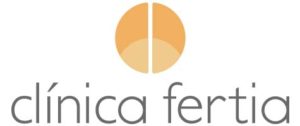Endometrial receptivity test (ERA, ER-Map)

What is the Endometrial receptivity test?
The endometrium is the mucous layer that lines the uterus and thanks to the action of sex hormones, cytokines, and other mediators, the endometrium prepares to interact with the embryo and allow it to implant. The implantation window is known as the period of time in which the endometrium is receptive, that is, it has acquired the necessary characteristics for the embryo to adhere to it and to implant.
Technique
By performing this test, it is possible to detect displacements of the implantation window, present in about 20-25% of women with implantation failure, thus allowing us to perform a personalised embryo transfer by predicting a woman’s personal window of implantation and increase the probability of pregnancy.
In these cases of implantation failure, both the endometrial thickness and the quality of the embryos being transferred are adequate, but implantation does not occur because the embryo transfer has not been carried out at the most optimal moment.
Frequently asked questions about reproduction treatments
If you would like more information about our treatments, we are always available to help and answer any of your questions.
How long do I have to wait to start treatment?
How many attempts can I make?
In the case of artificial insemination, here at the clinic we recommend a maximum of four attempts, since 90% of pregnancies occur in the first four cycles.
Regarding In-vitro fertilisation or microinjection, our clinic never makes more than four attempts using these techniques.
In the case of egg donation, it is more difficult to establish a limit, this will normally be determined by psychological and also economic factors.
Can you use these techniques when you have already entered menopause?
In these cases, the reception of eggs from a donor must be used.
What are the biggest concerns of egg or sperm recipient couples?
Another factor that concerns a couple is the health of the donors and the physical resemblance to them.
In our centre, both in the case of sperm donors and egg donors, our goal is to seek that the physical resemblance is as similar as possible to the parents.
Are these treatments expensive?
Clínica Fertia is a pioneer in maintaining an honest and transparent policy. Since 2002 we have published the information of the cost of our treatments on our website.
